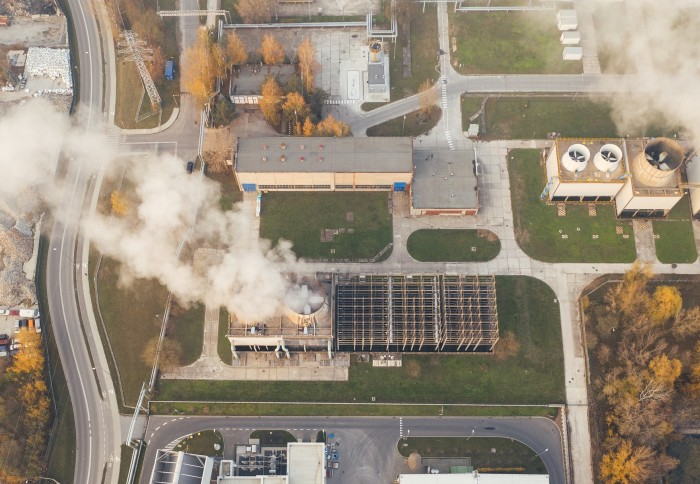New research shows how carbon capture technology can trap almost all emissions
by Gemma Ralton

A recent study revealed that amine-based carbon capture technologies can capture 99 per cent of carbon emissions, a promising step towards net zero.
Scientists have identified that post-combustion capture of carbon dioxide (CO2) using amine absorption, a liquid-based carbon capture and storage (CCS) technology, is capable of capturing up to 99 per cent of CO2 from emission sources. This presents a promising opportunity for energy and industrial decarbonisation, and a step towards achieving net zero targets.
In the study, published in Environmental Science & Technology, researchers from Imperial College London’s Department of Chemical Engineering and the Centre for Environmental Policy used computational models to demonstrate that amine-based CCS could cost-effectively capture high levels of CO2 across a wide range of applications in power and industry, highlighting the areas with the strongest potential for cost reduction.
International decarbonisation targets
“We hope our research can challenge the traditional assumption that 90 per cent CO2 capture is the upper limit by showing that 99 per cent capture is possible for little increase in cost.” Dr David Danaci Department of Chemical Engineering
Carbon capture and storage will play a vital role in meeting international decarbonisation targets as 80 per cent of the current global energy consumption continues to rely on fossil fuels. Maximising the CO2 captured for post-combustion applications will also reduce the reliance on carbon dioxide removal technologies which are currently limited in availability, less developed and potentially more expensive.
Chemical absorption is one type of CCS technology and is based on the reaction between CO2 and specific compounds called solvents that form chemical bonds between the CO2 and the solvent.
Lead author Dr David Danaci said: “We hope our research can challenge the traditional assumption that 90 per cent CO2 capture is the upper limit by showing that 99 per cent capture is possible for little increase in cost.”
Solvent-based capture technologies
Post-combustion capture directly separates CO2 from combustion flue gases - the mixture of gases produced by the burning of fuel or other materials in power stations and industrial plants. The most mature technology employed for this application is amine absorption, where amine refers to a solvent derived from ammonia.
The researchers highlighted that the study used a common amine solution called monoethanolamine for the CO2 capture process which is used in many other CCS studies. However, it is expected that advanced solvents such as 2-aminomethylpropanol/piperazine and KS-1™ will result in lower energy requirements and reduced costs. Moving forward, the next steps will be to perform detailed case studies using these newer solvents to assess their effectiveness.
Co-lead author Dr Mai Bui added: “This work is important for net zero because maximising CO2 capture at the source is more effective than atmospheric CO2 removal when the whole system is considered. We hope our findings will improve the design of future CCS plants.”
-
‘En route to zero emissions for power and industry with amine-based post-combustion capture’ by Danaci et al., published 3 August 2021 in Environmental Science & Technology.
Article text (excluding photos or graphics) © Imperial College London.
Photos and graphics subject to third party copyright used with permission or © Imperial College London.
Reporter
Gemma Ralton
Faculty of Engineering